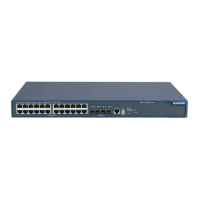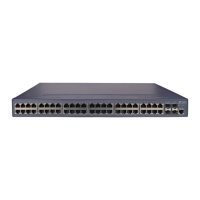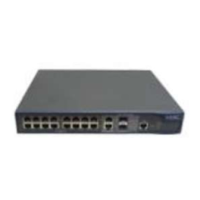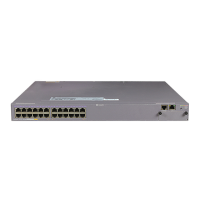Operation Manual - STP
Quidway S3000 Series Ethernet Switches Chapter 1 RSTP Configuration
1-4
received, the local BPDU is updated. And the optimum configuration BPDU will be
elected through comparing the configuration BPDUs of all the ports.
The comparison rules are:
z The configuration BPDU with a smaller root ID has a higher priority
z f the root IDs are the same, perform the comparison based on root path costs. The
cost comparison is as follows: the path cost to the root recorded in the
configuration BPDU plus the corresponding path cost of the local port is set as S,
the configuration BPDU with a smaller S has a higher priority.
z If the costs of path to the root are also the same, compare in sequence the
designated switch ID, designated port ID and the ID of the port via which the
configuration BPDU was received.
In summary, we assume that the optimum BPDU can be selected through root ID
comparison in the example.
11) Specify the root port, block the redundancy link and update the configuration
BPDU of the designated port.
The port receiving the optimum configuration BPDU is designated to be the root port,
whose configuration BPDU remains the same. Any other port, whose configuration
BPDU has been updated in the step Select the optimum configuration BPDU, will be
blocked and will not forward any data, in addition, it will only receive but not transmit
BPDU and its BPDU remains the same. The port, whose BPDU has not been updated
in the step Select the optimum configuration BPDU will be the designated port. Its
configuration BPDU will be modified as follows: substituting the root ID with the root ID
in the configuration BPDU of the root port, the cost of path to root with the value made
by the root path cost plus the path cost corresponding to the root port, the designated
switch ID with the local switch ID and the designated port ID with the local port ID.
The comparison process of each switch is as follows.
Switch A:
AP1 receives the configuration BPDU from Switch B and finds out that the local
configuration BPDU priority is higher than that of the received one, so it discards the
received configuration BPDU. The configuration BPDU is processed on the AP2 in a
similar way. Thus Switch A finds itself the root and designated switch in the
configuration BPDU of every port; it regards itself as the root, retains the configuration
BPDU of each port and transmits configuration BPDU to others regularly thereafter. By
now, the configuration BPDUs of the two ports are as follows:
Configuration BPDU of AP1: {0, 0, 0, AP1}.
Configuration BPDU of AP2: {0, 0, 0, AP2}.
Switch B:
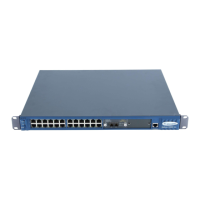
